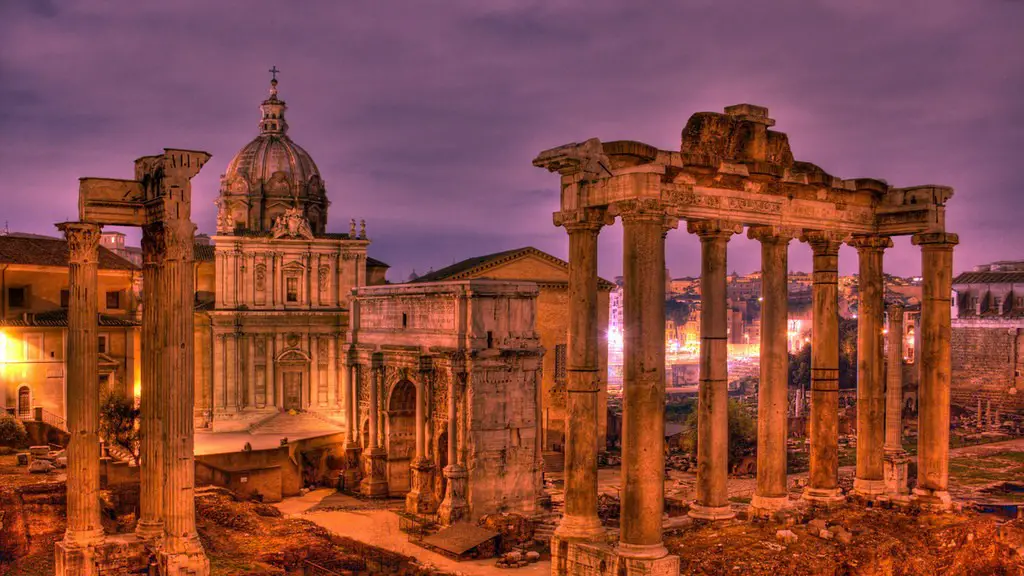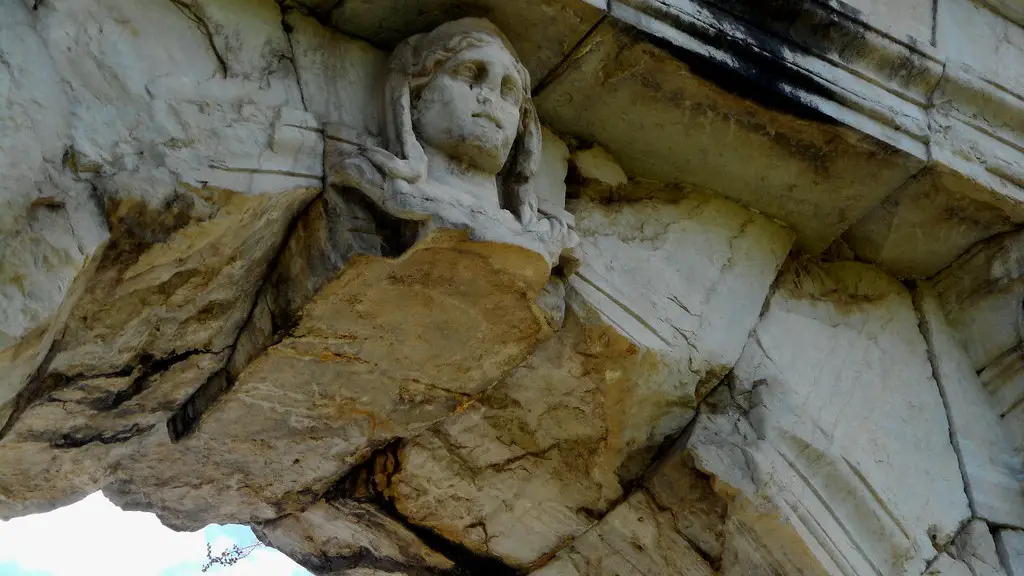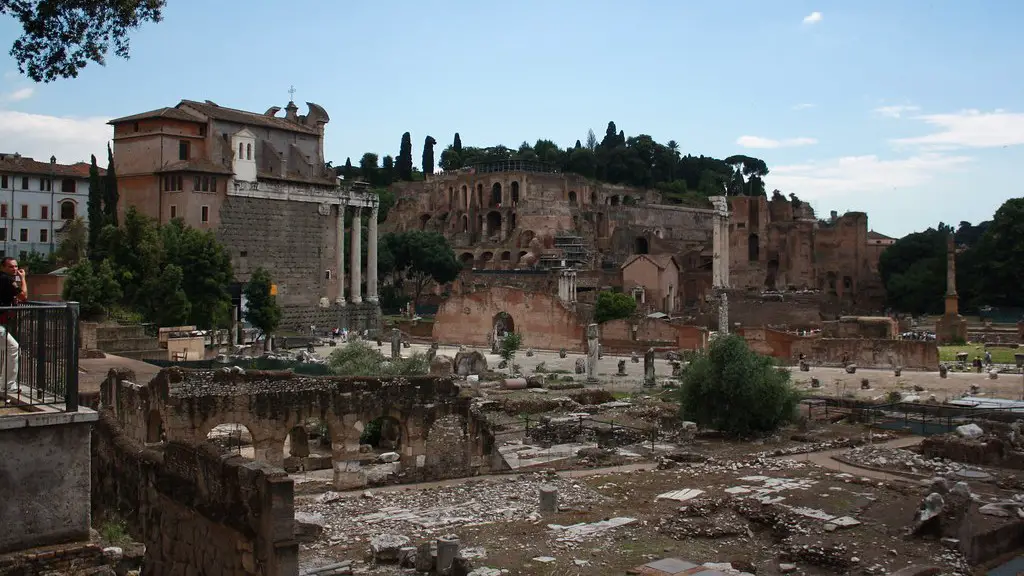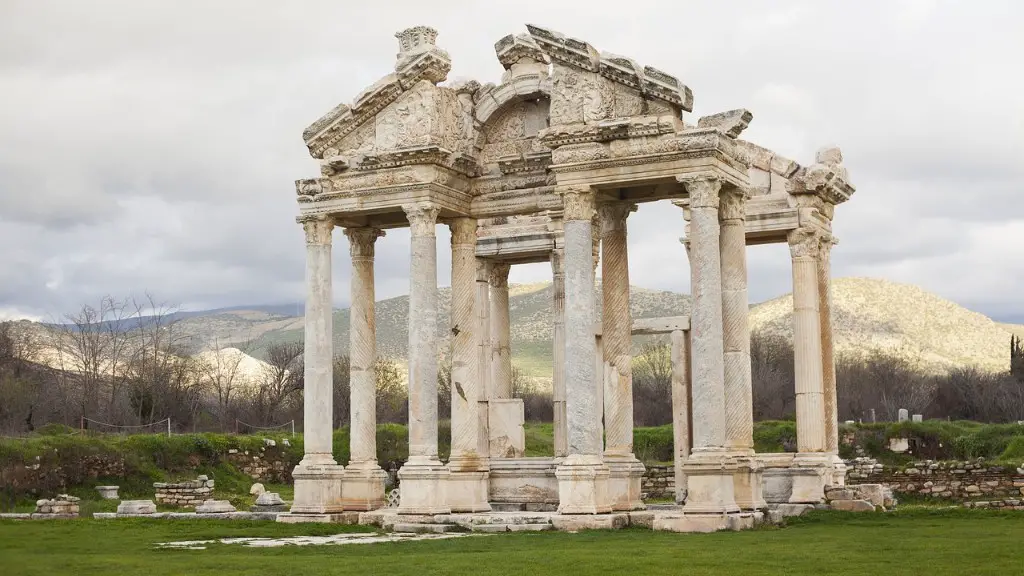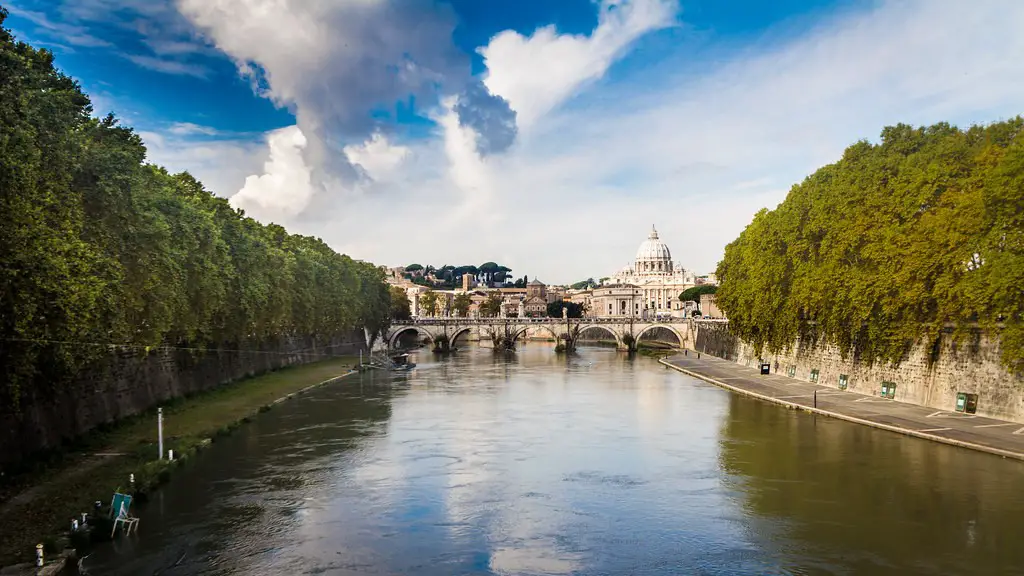Why is Ancient Rome Geographically Important?
Ancient Rome was a great and powerful empire that stretched from Egypt in the east to Spain in the west. Throughout its time as an empire, Ancient Rome had a profound influence on the course of human history, from its philosophies and ideas to its politics and art. But why is Ancient Rome geographic so important?
Rome’s geography had a major influence on its eventual rise to power. Before Rome was founded, the region was home to several scattered settlements, but the geography of the river Tiber proved to be an ideal location for a city. The Tiber provided a source of water, a navigable waterway to transport goods and people, and an easy way to defend the city from invaders. Additionally, Rome was able to eventually dominate surrounding territories due to its strategic geographical position, which allowed it to control the Mediterranean trade. This further increased Rome’s power and wealth by increasing its access to valuable resources and a diverse population.
Rome’s strategic and advantageous geographical position made it a natural center for trade and commerce. Roman traders were able to travel across Europe, Africa, and the Middle East, opening up new markets, finding new resources and fuel their rapidly expanding economy. Rome’s markets were filled with goods from all corners of the world, and the Roman Empire became the largest economic power of its time. Even the famous Roman roads eventually connected the Empire’s internal provinces, promoting even greater commerce and trade along the way.
Ancient Rome also had an immense impact on modern-day geography. As the Roman Empire expanded and its territories were divided, the provinces created by Rome left a lasting imprint on the political geography of Europe. The many rivers, mountain ranges, and other physical features of Europe that marked the imperial boundaries of Rome remain clearly visible today, and are often the boundaries of Europe’s modern countries. Ancient Rome’s geographic importance affects the regional political alignment of Europe to this day.
But perhaps more significantly, Ancient Rome’s influence on the world’s cultural and physical geography is more palpable. Roman architecture, art, and language are evident around the world in monuments, artwork, and buildings. And from the classical roads to the Colosseum and other ancient landmarks, the physical geography of modern cities is filled with the cultural legacies of Rome.
Overall, Ancient Rome was a pivotal empire that transformed the world both politically and geographically. Its strategic and advantageous geography gave it an advantageous footing in the international economy of its time. Ancient Rome had a profound impact on the development of modern-day geography, leaving its legacy in the form of ancient landmarks and cultural legacies.
How Ancient Rome Historical Geography Shaped Europe
Ancient Rome was responsible for creating many of the geographical boundaries still used today throughout Europe. Ancient Roman cartographers began categorizing and mapping Europe in 50 BC and this became the basis for all later cartography. During the time of the Roman Empire, its frontiers stretched for thousands of miles, incorporating what is now England, France, Germany and much of Italy. Ancient Rome left its distinct mark on Europe by creating a network of roads and connecting many different regions, making it easier for international trade, as well as improving communication between different regions.
Ancient Rome also had a large influence on the modern landscape of Europe. As the Empire spread throughout Europe, it left behind multiple monuments, temples, baths, and amphitheaters, which remain remarkably well preserved today. These monuments give us a window into the past and were important symbols of power and prosperity during Roman times. This architectural legacy can still be experienced in many modern cities across Europe such as Rome, Athens, and Istanbul.
Additionally, the language and culture of Ancient Rome also had an enduring impact on modern Europe. Latin, which was the official language of the Roman Empire, continues to be used today. In fact, many of the words in modern Italian, Spanish, French, and Romanian were derived from Latin, as were the legal codes of many European countries. Additionally, Roman culture and ideas have been passed down from generation to generation, and have shaped the culture of many countries in Europe.
Historical geography has shaped Europe in a number of ways for centuries. From the language spoken to the monuments still standing, the physical and cultural legacies from Ancient Rome remain strongly visible today. In addition, the roads, borders and other infrastructure created by the Roman Empire have become the basis for many of the geographical boundaries throughout Europe.
The Economic Impact of Ancient Rome’s Geographic Locations
One of the most important factors contributing to Ancient Rome’s success was its favorable geographic location. Located near the Mediterranean Sea and in the center of the Italian Peninsula, Ancient Rome was ideally situated to control important trade and political routes. In addition to having access to the sea, Rome was surrounded by fertile agricultural land and had access to many natural resources, such as timber and minerals. As a result, Rome had access to a wide range of materials, goods, and resources.
These resources were also important in making Rome a strong economic power, as they enabled the city to produce goods at a lower cost. This, in turn, allowed Rome to sell their goods for less and expand their market. Rome also benefited from controlling their main trade routes. This allowed their goods to be easily transported around the Mediterranean and to other countries, meaning Rome could control the supply and price of certain goods.
Aside from their advantageous geographical location, Rome’s growing economy was also helped by their use of technology and engineering. The Romans developed systems of aqueducts and roads, which allowed them to efficiently transport goods and resources around the Empire, as well as provided access to clean drinking water. Rome’s engineering feats also included harbors and canals, which allowed Rome to quickly transport people and goods via ships, enabling them to establish a vast maritime trade network.
The combination of their advantageous geographic location and their sophisticated engineering and technology allowed Rome to become a major economic power. This enabled the city to create and sustain a large empire, making them a dominant trading partner, and contributing to their wealth and prosperity.
Modern Day Geography and Legacy of Ancient Rome
Today, Ancient Rome’s geographic legacy is still evident in many parts of the world. Most of the modern-day countries in Europe, and even some parts of Asia and North Africa, were once part of the Roman Empire. This means that languages, cultures, and even political boundaries in these areas were all influenced by Ancient Rome’s geographic footprint.
But beyond its political legacy, Rome also left an indelible mark on the world’s physical geography. Ruins of the empire’s great cities, monuments, and historical sites dot the landscape around the Mediterranean. From the Colosseum in Rome to the amphitheaters of Ephesus in Turkey, these landmarks are a reminder of Ancient Rome’s lasting impact on today’s geography.
Ancient Rome’s influence can also be seen in modern-day city layouts. The Romans were the first to use a grid layout for cities, which made it easier for people to travel around. This grid layout can now be seen in almost all large cities in the world and still follows the same rule that the Romans developed centuries ago.
Undoubtedly, Ancient Rome left its imprint on the world’s geography in a variety of ways. Its political boundaries, cultural influences, and physical monuments still remain in many areas around the world today. Its economy was heavily influenced by its advantageous geographic location, which allowed Rome to become a major trader and to create a vast empire.
The Impact of Ancient Rome’s Geographic Reach
The geographic reach of Ancient Rome was extremely significant during its reign. Not only did the Roman Empire cover a vast area, it also spread to many places which had previously been considered to be uncivilized or primitive. This was especially true in places such as the British Isles and parts of Northern Europe, where the Roman Empire had a tremendous influence on the development of local cultures.
This influence was thanks to the introduction of Roman culture and technology. The Roman Legions also introduced advanced engineering techniques, such as roads, canals, and aqueducts, as well as military tactics, that had a lasting impact. Roman law and language were also introduced, which played a significant role in shaping these areas socially and politically. Roman coins and artifacts have also been found throughout many countries in Europe, and these are evidence of the far reach of the empire.
The influence of the Roman Empire extended even further, to areas which were not part of the empire at the time. This is particularly true of African and Asian countries, who were able to acquire Roman technology and goods through trade. In addition, Ancient Rome acted as a beacon of progress, paving the way for new developments in science, culture, and the arts.
Therefore, it can be said that Ancient Rome had a profound impact on the world’s geography. Its vast geographic reach meant that it left its mark on numerous places. Its culture, advanced engineering, and technology spread far and wide, allowing its influence to shape the development of countries and regions well after the decline of the empire.
Continuing Relevance of Ancient Rome Geographic
It is undeniable that Ancient Rome had a considerable influence on the world in terms of its geography. From the network of roads it constructed, to the cities and monuments it left behind, the impact of Ancient Rome’s geographic reach can still be felt in many areas today. Roman language, law, and culture still exist in many of the regions it once occupied, and its influence remains evident in many areas.
However, despite the long since decline of the Roman Empire, its geography still remains relevant because of its ability to shape the modern world. Through its lasting legacy of infrastructure, technologies, cultures, and ideas, Rome has created the framework for much of what we consider to be modern civilization. Its impact can still be felt today in a variety of ways, from the legal and political systems of Europe to the way cities are laid out and technological advances.
Though the Roman Empire has been gone for centuries, its importance in the history of human civilization cannot be denied. Ancient Rome’s geography was an invaluable asset to the rise of the empire and continues to shape our world even today.
